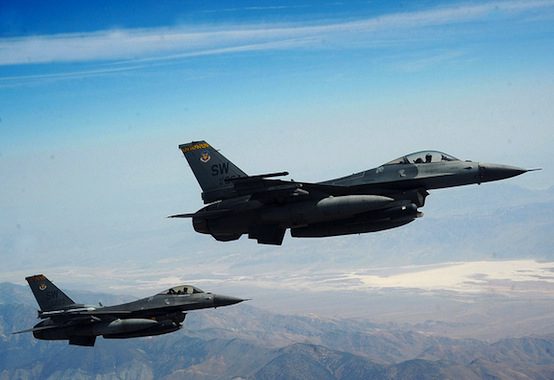The Perils and Limits of ‘No-Fly Zones’

Micah Zenko offers a reminder that there are limits to what a “no-fly zone” can do:
Second, protecting civilian populations from one form of lethality — in this case, airpower — may incentivize governments to attack adversaries with other combat arms, like artillery, armor, and infantry. This was certainly the case with Saddam’s brutal counterinsurgency in the early 1990s against Shiite insurgents and civilians in southern Iraq, which again occurred on the ground as U.S. pilots enforcing the NFZ circled overhead. As has been noted repeatedly, a NFZ cannot effectively counter ground-based lethality.
The phrase “no-fly zone” has become a common one in debates over how the U.S. should respond to foreign conflicts, because it allows its advocates to obscure what it is they’re calling for (i.e., initiating significant hostilities against another state) and it creates the impression that the U.S. can “do something” about a conflict overseas at low cost with relatively few risks. Interventionists are always keen to minimize the complexity and danger of this option in order to lower the barrier to entering the conflict, and they routinely oversell its effectiveness by exaggerating how successful previous “no-fly zones” were. That usually involves crediting air power for achieving things that were achieved some other way or by attributing near-magical powers to the creation of a “no-fly zone” in altering the behavior of the targeted regime. If a “no-fly zone” is established in a new place and then “fails” to achieve things that it never could, that becomes the excuse to agitate for even more aggressive measures. And if a government attempts to oppose the “no-fly zone,” that becomes part of the justification for toppling the regime all together as we saw during the debate over the invasion of Iraq.
It is much less politically risk to call for a “no-fly zone” than it is to call openly for attacking another government, but that is necessarily what creating a “no-fly zone” entails. Imposing this over another country’s airspace is an act of war, but it is often portrayed as something much more benign. Doing this is typically illegal and a violation of the sovereignty of the targeted state. As such, the creation of a “no-fly zone” over another country reflects the presumption that the U.S. and its allies have the right to police other countries’ affairs as and when they see fit. As far as many of its advocates are concerned, that is one of its features.
The phrase also serves as a Trojan horse to smuggle in more aggressive policies under the guise of “merely” keeping a government’s air force grounded. As Zenko shows, the creation of “no-fly zones” in the past has always been followed by an expansion of the mission to include more ambitious goals. The Libyan war is the most recent and obvious case where a “no-fly zone” morphed almost immediately into an air campaign to help overthrow the Libyan government. Having obtained authorization for one kind of action with much more limited goals, the U.S. and its allies expanded the campaign into a war for regime change. So when we hear demands for a “no-fly zone” in Syria or anywhere else, we should remember what it has meant in practice.